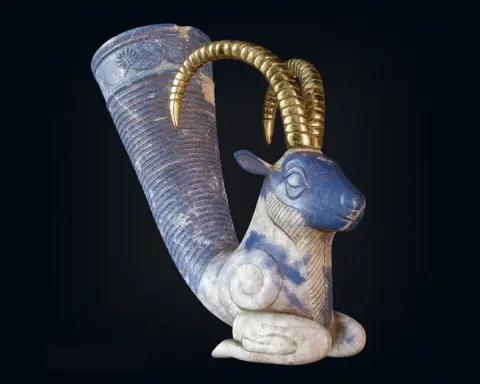In the annals of history, the unearthing of relics often unveils captivating tales of ancient civilizations and their groundbreaking innovations. Nestled within the historical tapestry of Varnhem Abbey lies an enigmatic discovery—an artifact that hints at a significant chapter in the evolution of medical practices during the Middle Ages.
This discovery centers around a copper-clad relic—an ancient forearm—that has sparked curiosity and speculation among historians and medical experts alike. Found within the cloister aisle of Varnhem Abbey, this relic carries the weight of history, embodying a time between 1260 and 1527, a period marked by cultural shifts and societal changes in Sweden.

Varnhem Abbey itself holds a rich history, founded in 1150 by Cistercian monks from Alvastra Abbey in Östergötland, Sweden. Through its existence, the monastery bore witness to various historical events, from the upheavals during the Reduction of Gustav I of Sweden in 1527 to the destruction wrought by Danish forces in the Northern Seven Years’ War of 1566.
The forearm, encased in a remarkably pure copper cylinder, presents a unique glimpse into early surgical interventions. The findings, meticulously analyzed in a study by Dan-Axel Hallbäck published in the “Ossa: International Journal of Skeletal Research,” reveal intriguing aspects of this ancient medical procedure.
It’s an intriguing conundrum: a healed fracture, signs of infection, and the unmistakable presence of a copper sheath raise questions about the survival and recovery of the individual post-surgery. The use of copper in this context is particularly fascinating, hinting at its potential antibacterial properties being leveraged unintentionally or purposefully by the practitioners of that era.

The nature of the injury that necessitated such a surgical intervention remains shrouded in speculation. Speculations range from weapon-induced injuries like those from axes or swords, leading to the application of the copper plate for stabilization. Yet, the specifics of how the arm functioned after the operation remain a mystery.
What truly captivates researchers and historians is the glimpse this discovery offers into the advanced medical knowledge and practices prevalent among the Cistercian monks during the Middle Ages. The use of materials like copper in surgical treatments speaks volumes about their innovative approach and resourcefulness in an era often misconstrued as medically primitive.
For those delving deeper into this compelling discovery, Dan-Axel Hallbäck’s paper in the “Ossa: International Journal of Skeletal Research” serves as a vital resource. While direct access to the paper might require academic database access, it offers profound insights into this ancient relic’s significance.
Beyond this relic, Varnhem Abbey’s historical richness and its link to early Swedish Christianity and the Cistercian Order provide a broader context to appreciate the significance of this discovery. Historical resources, including the abbey’s Wikipedia page, offer avenues to explore the interconnectedness of history and medicine in a bygone era.






